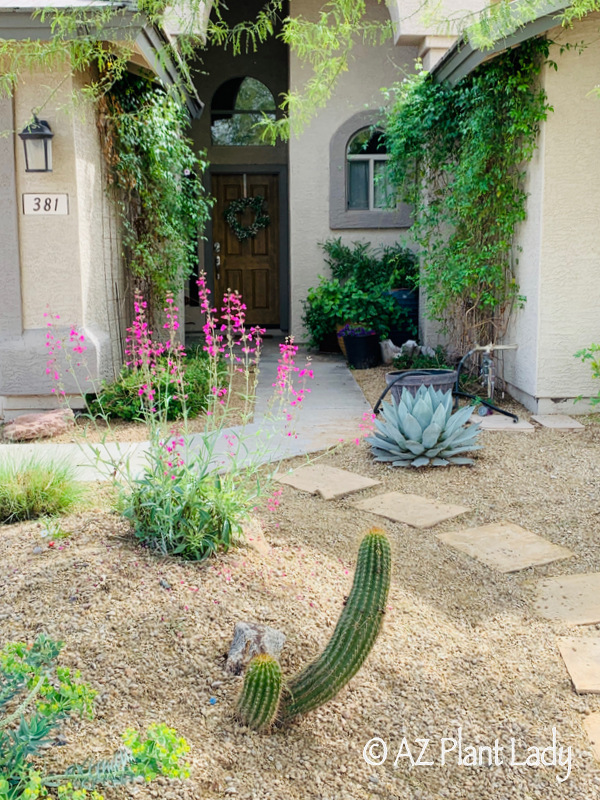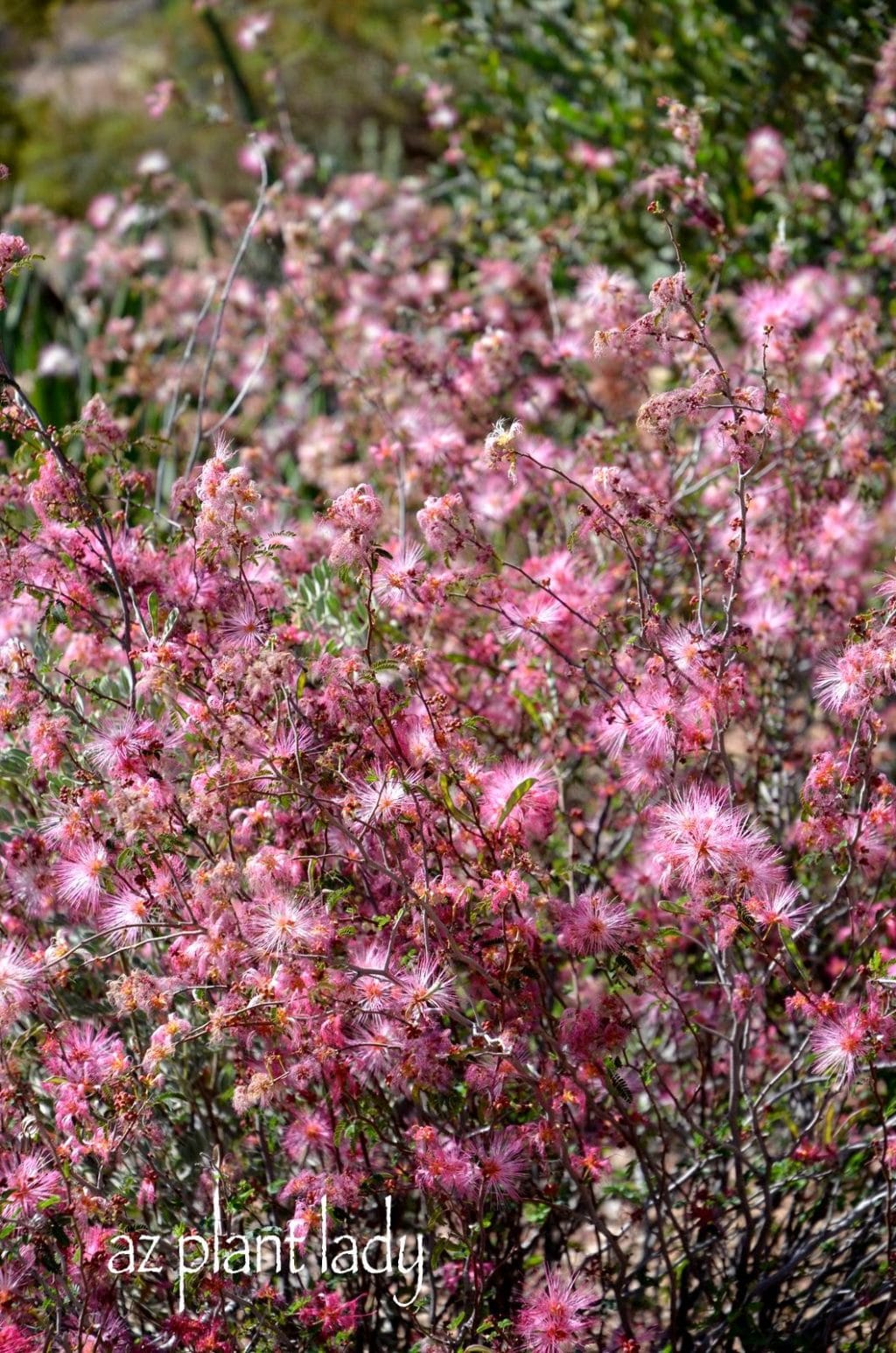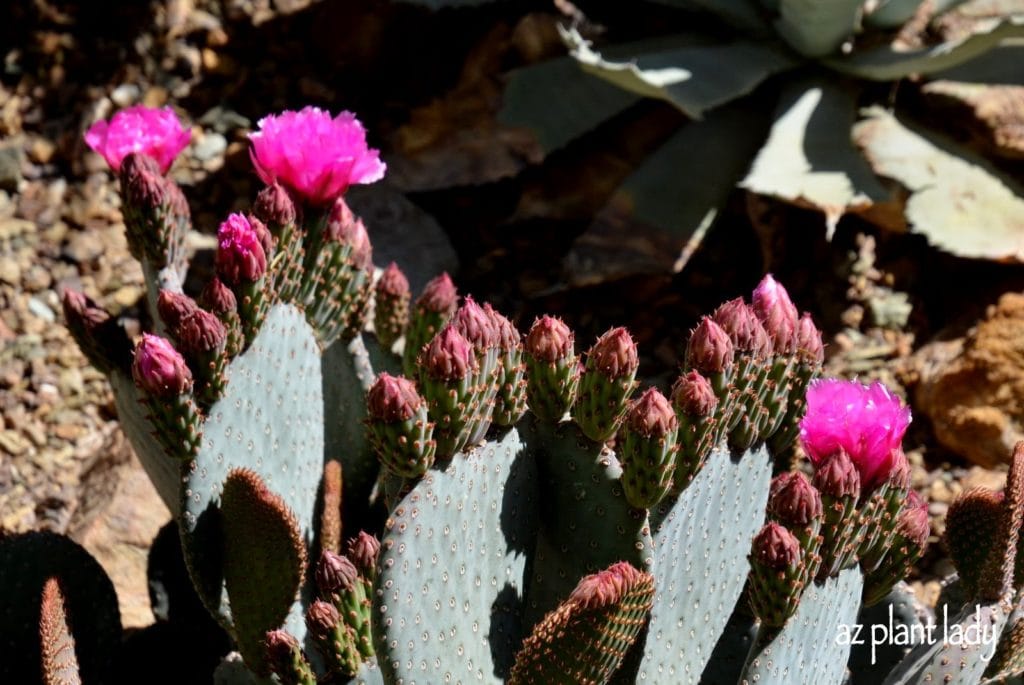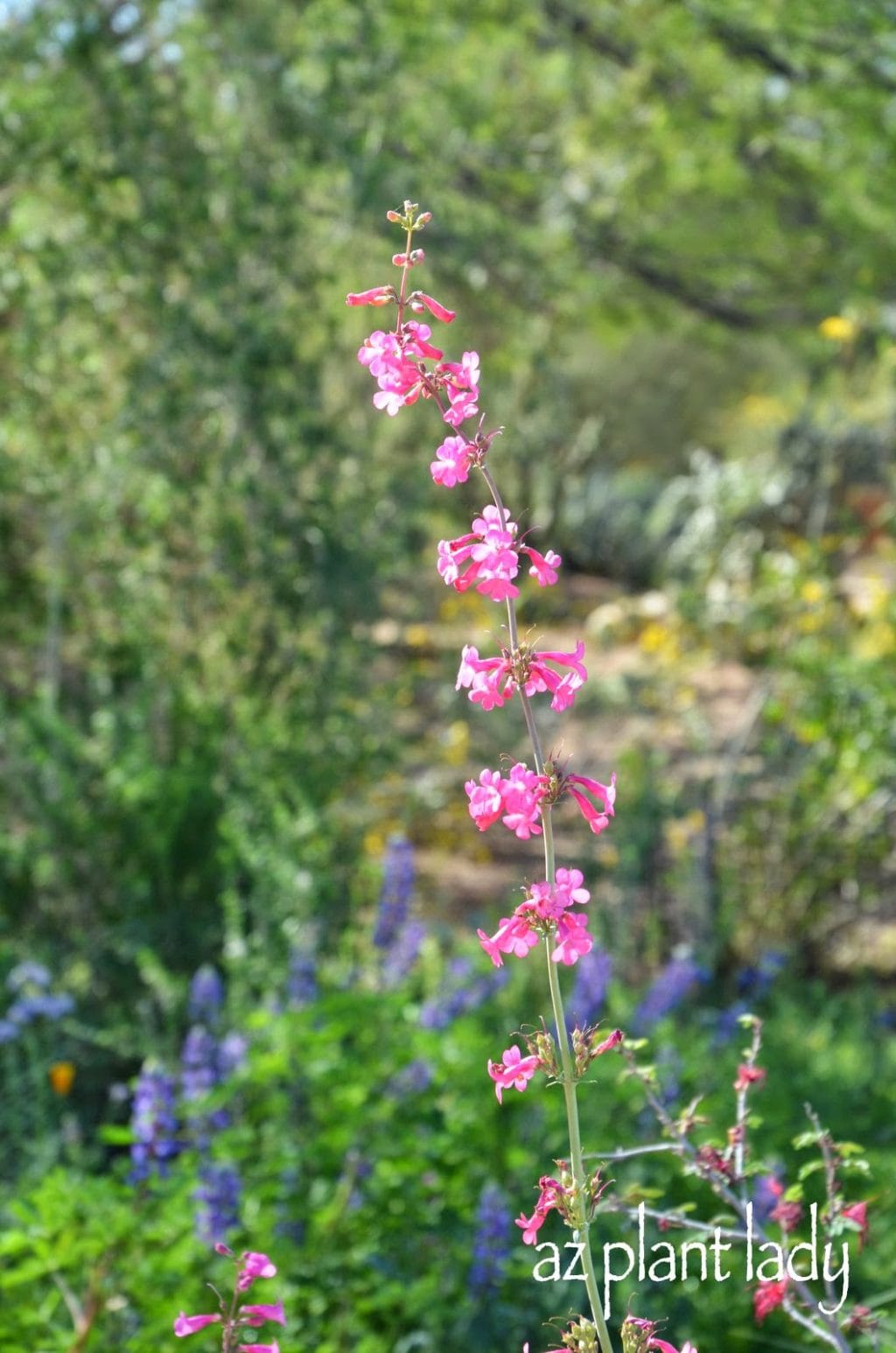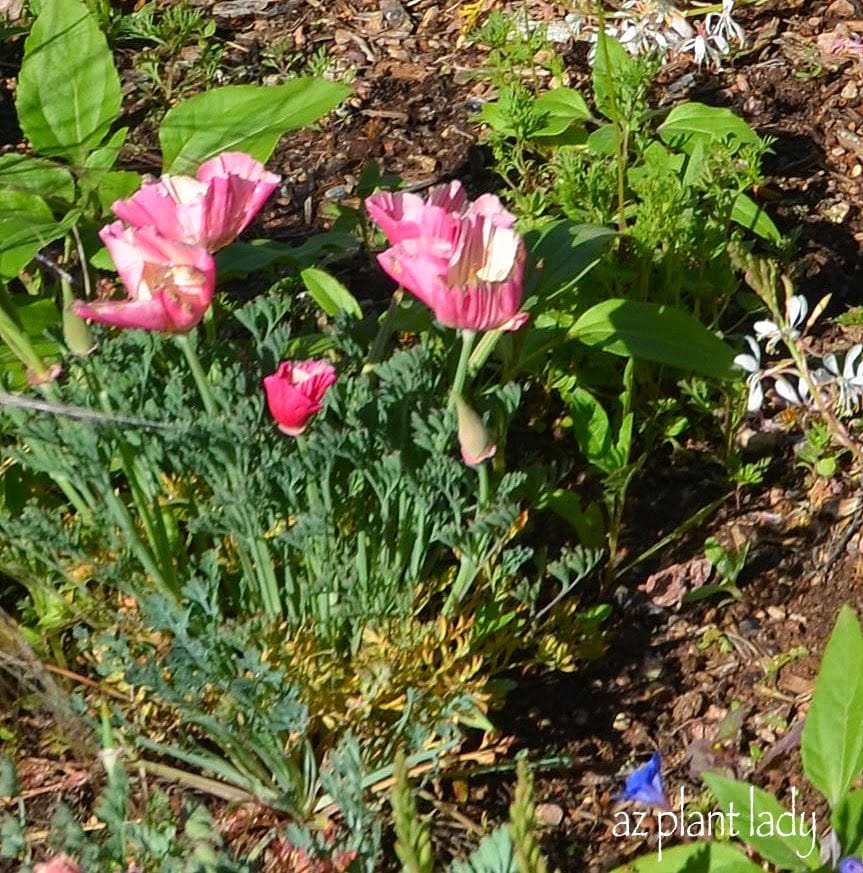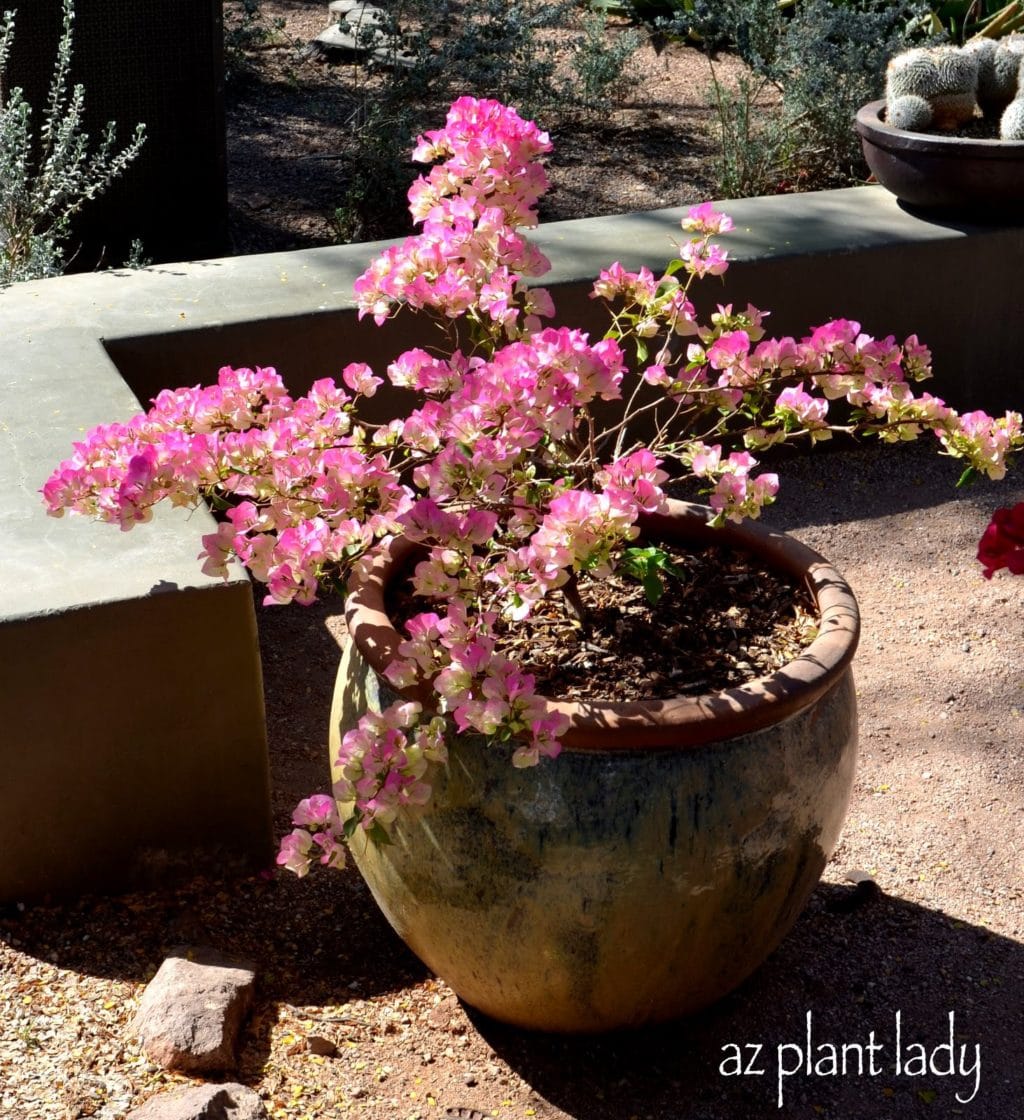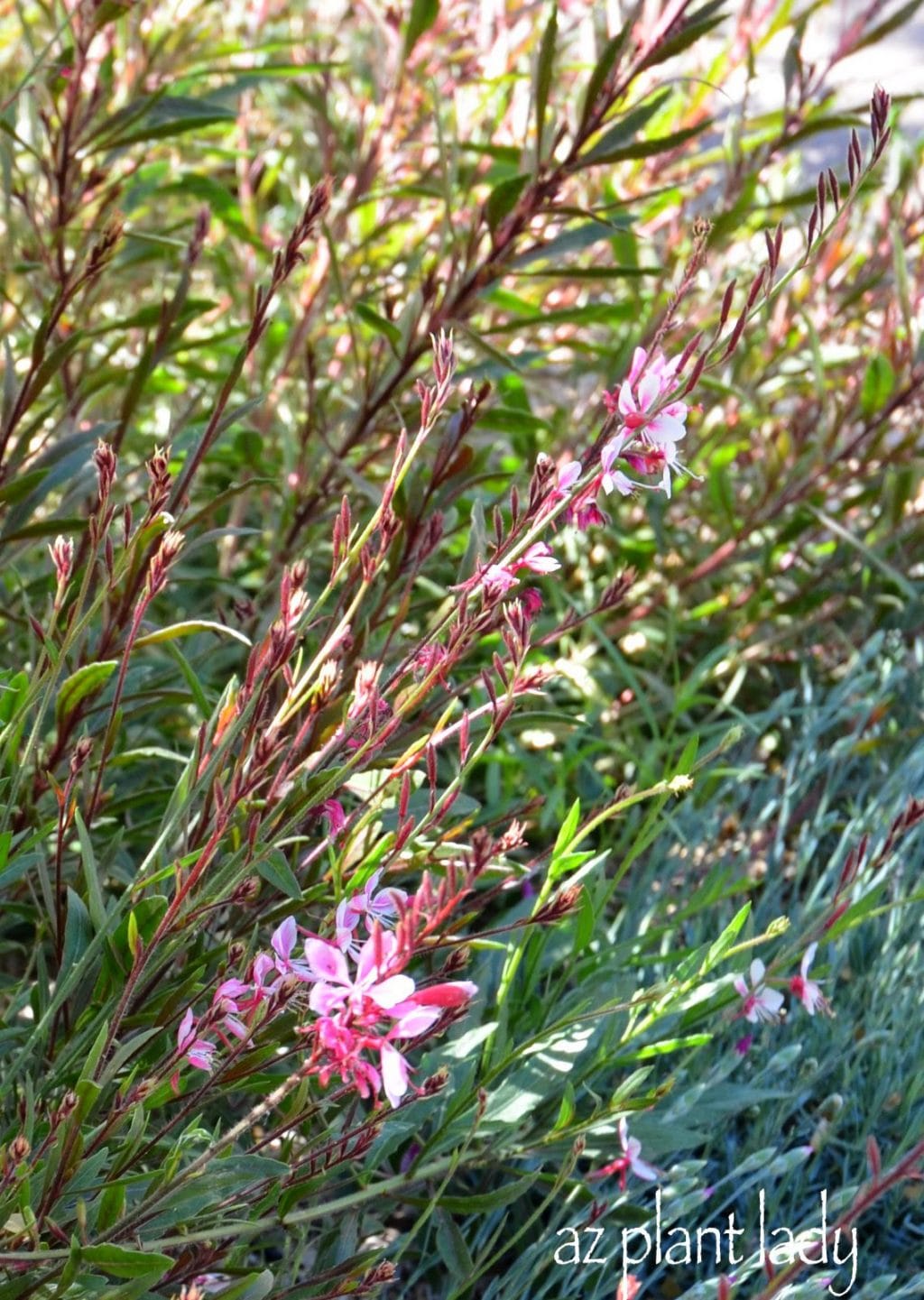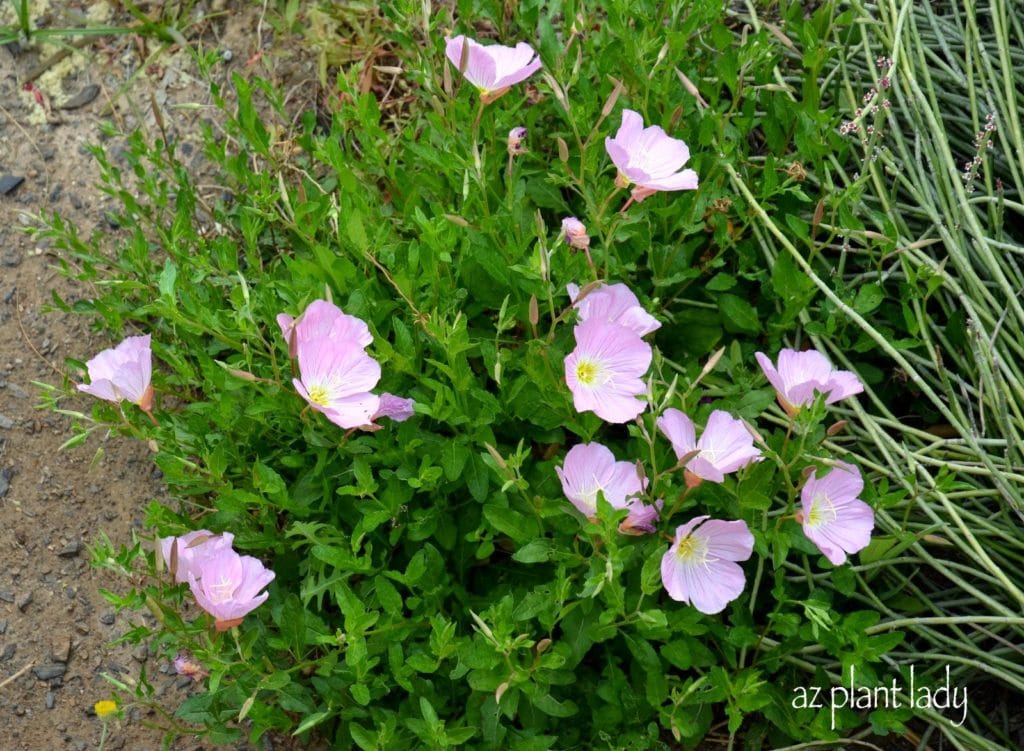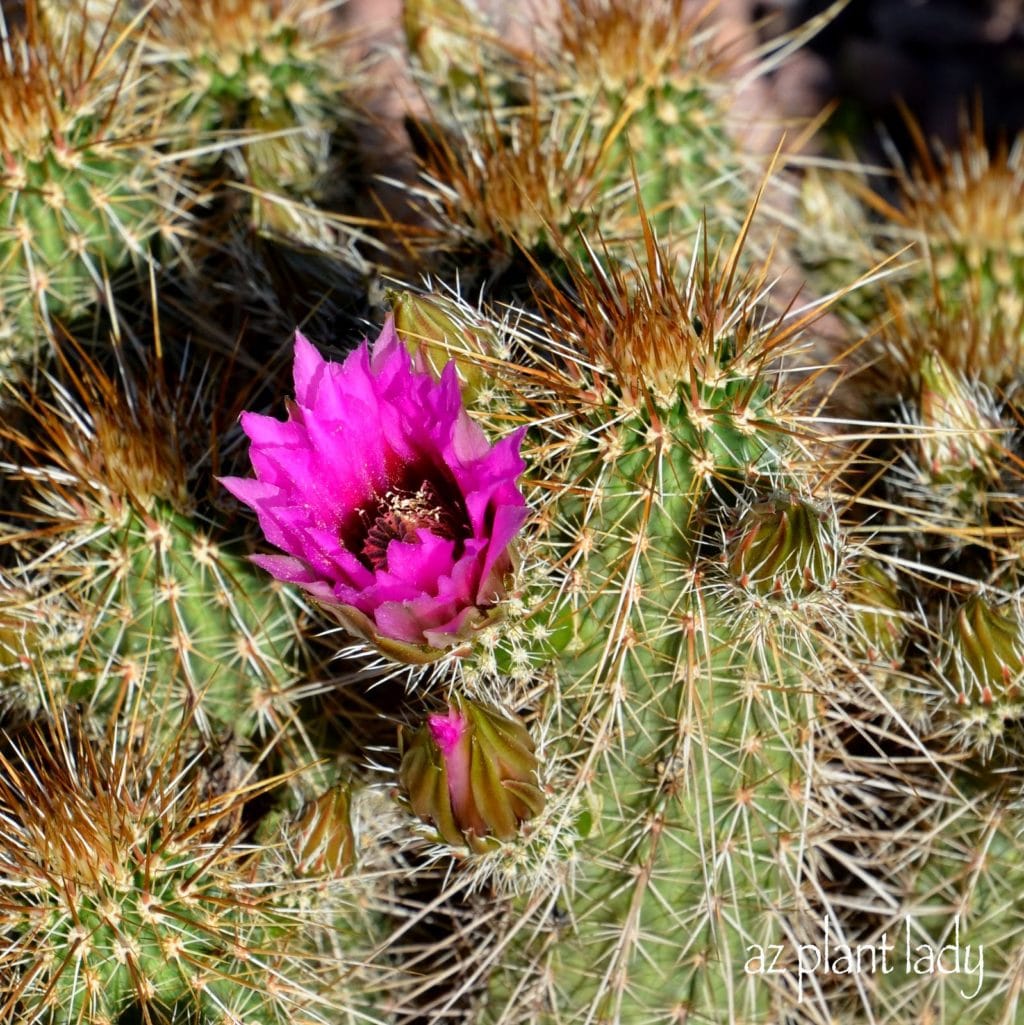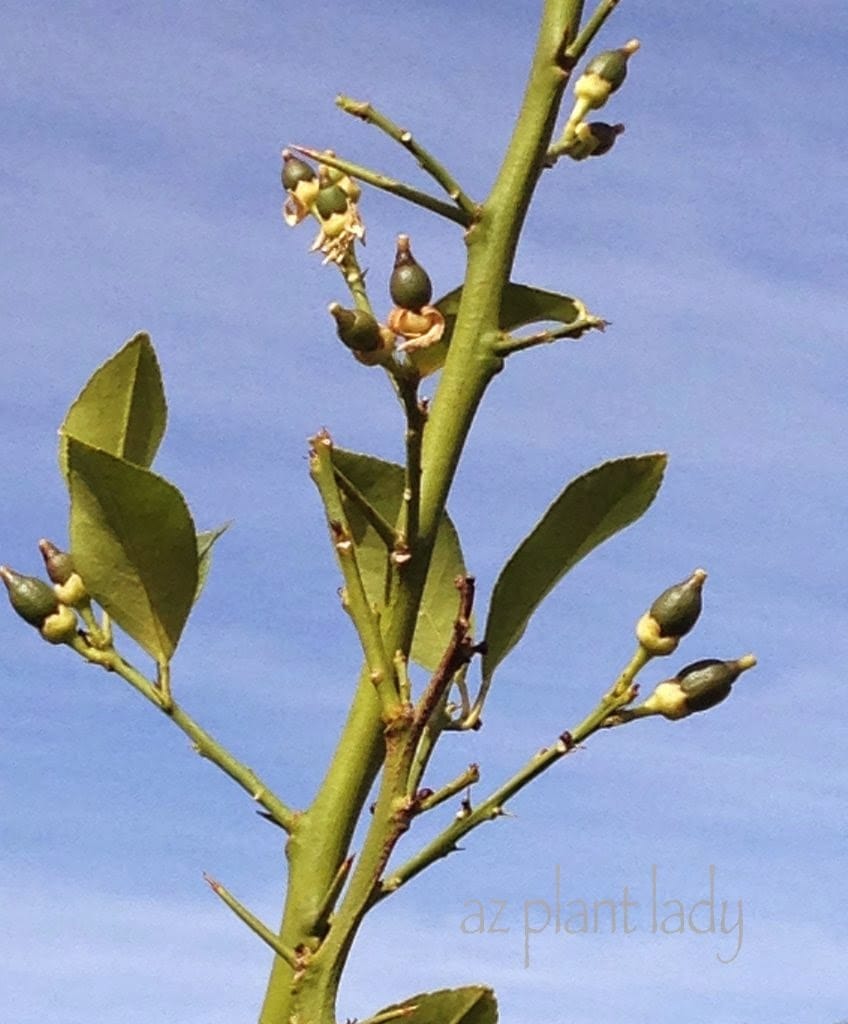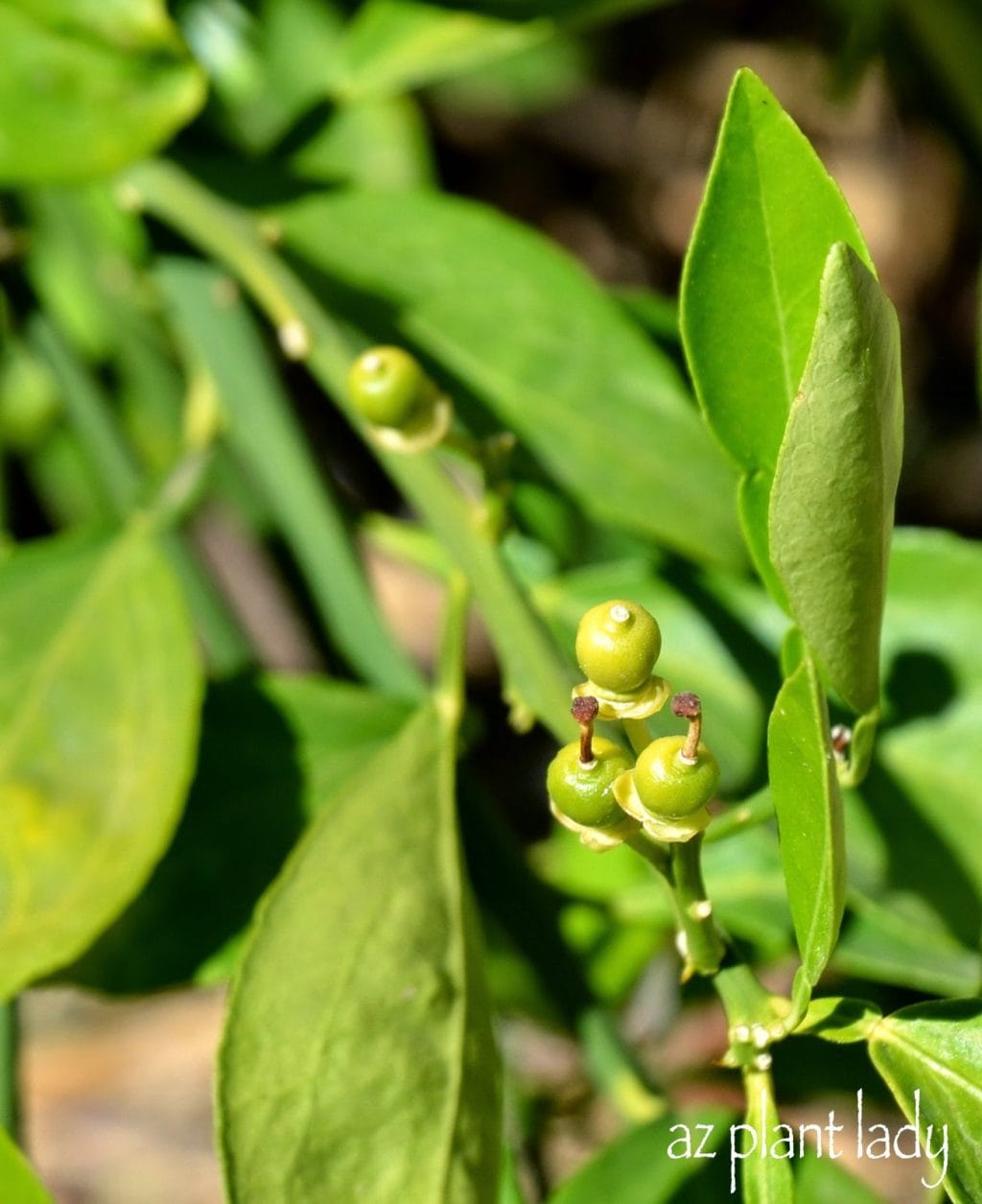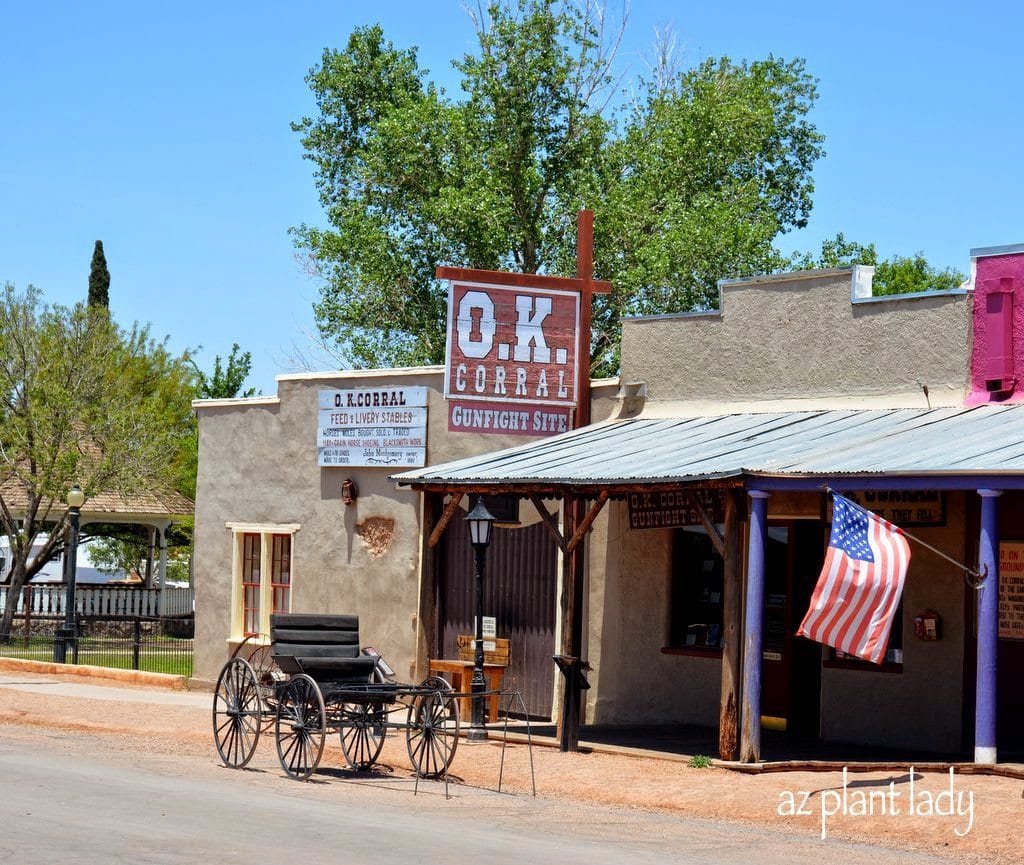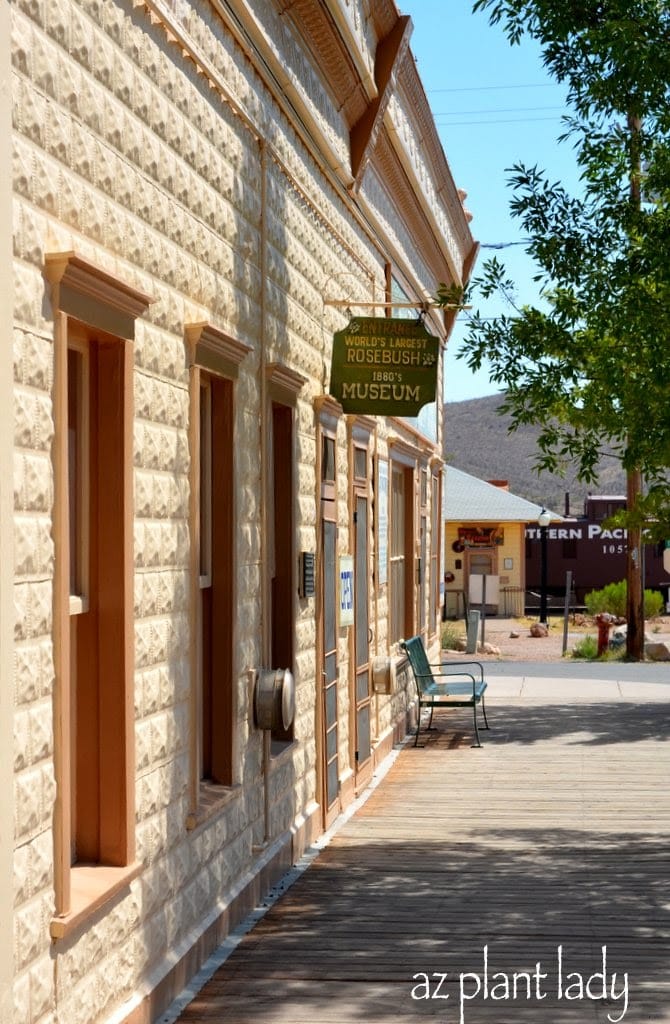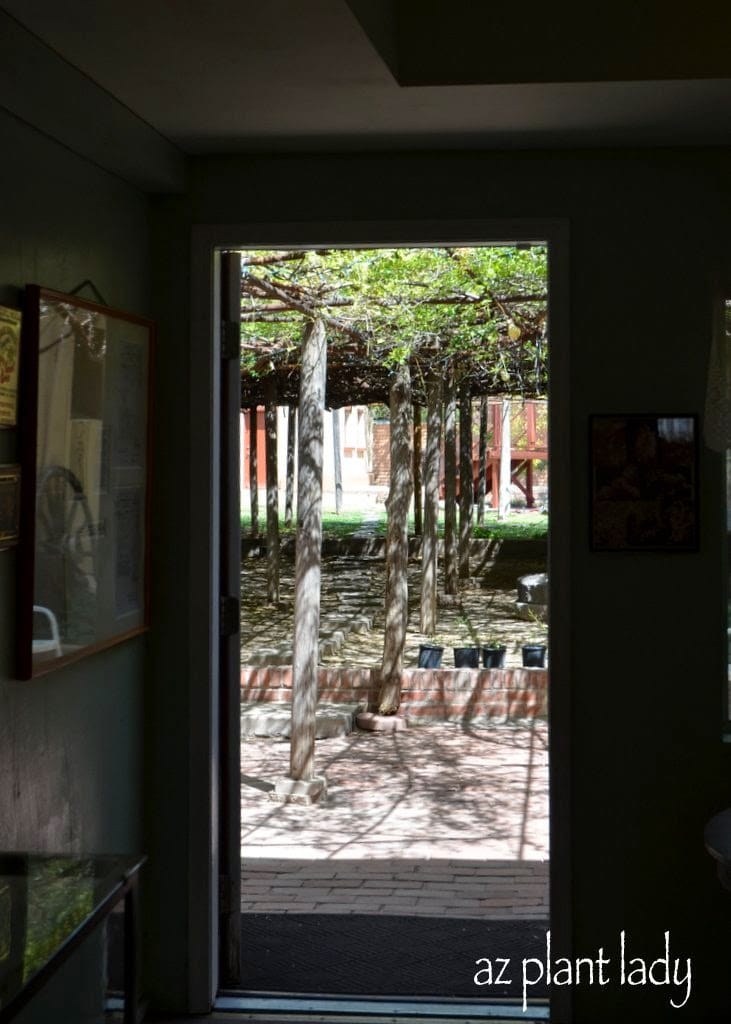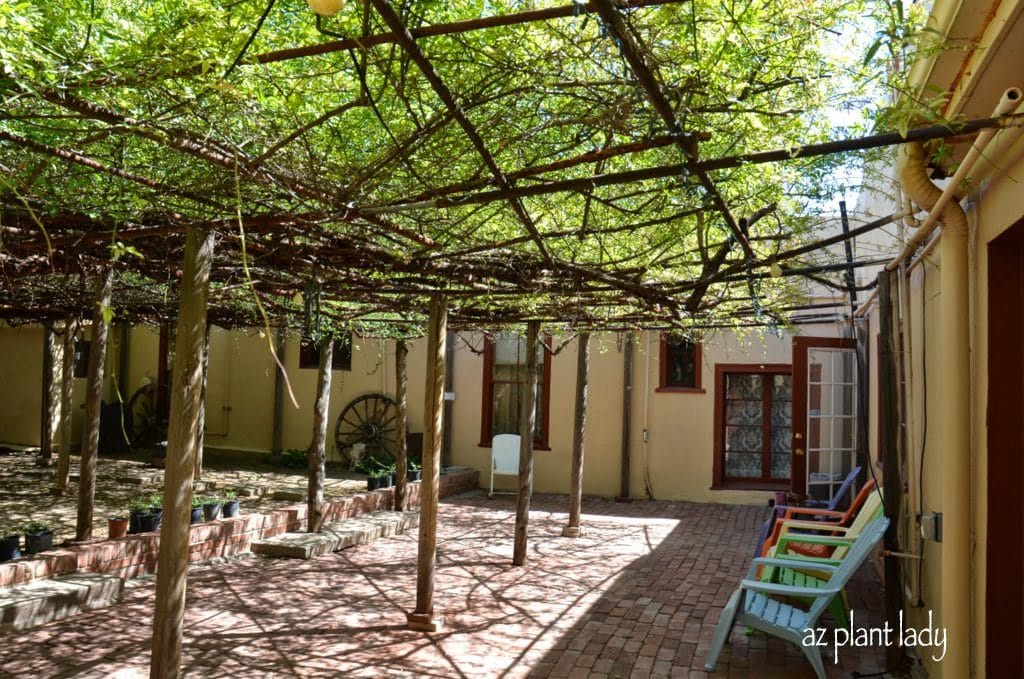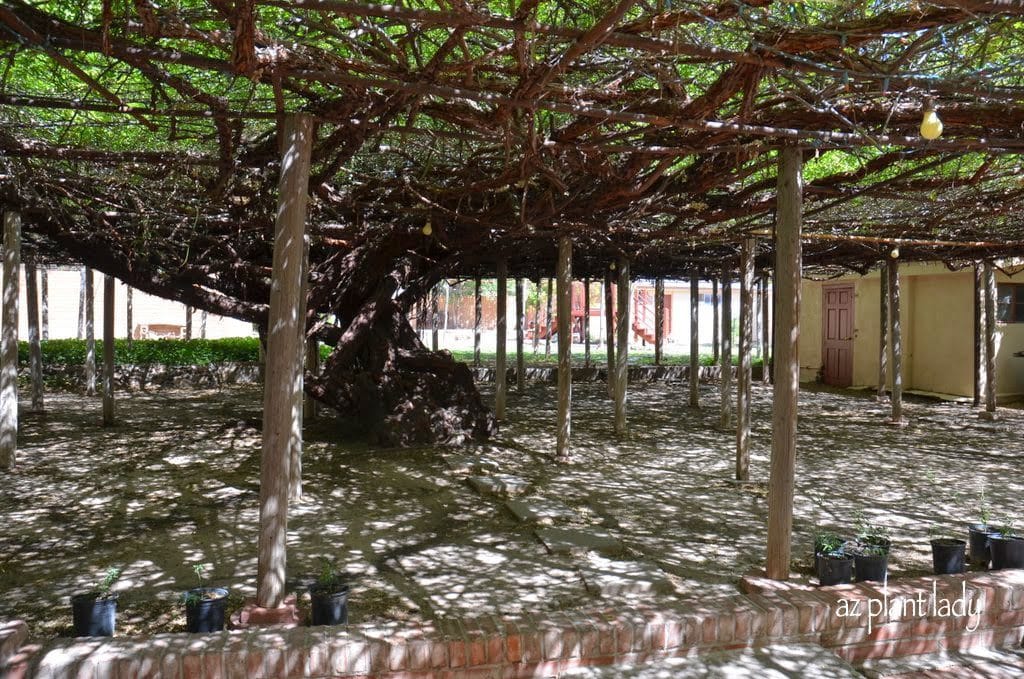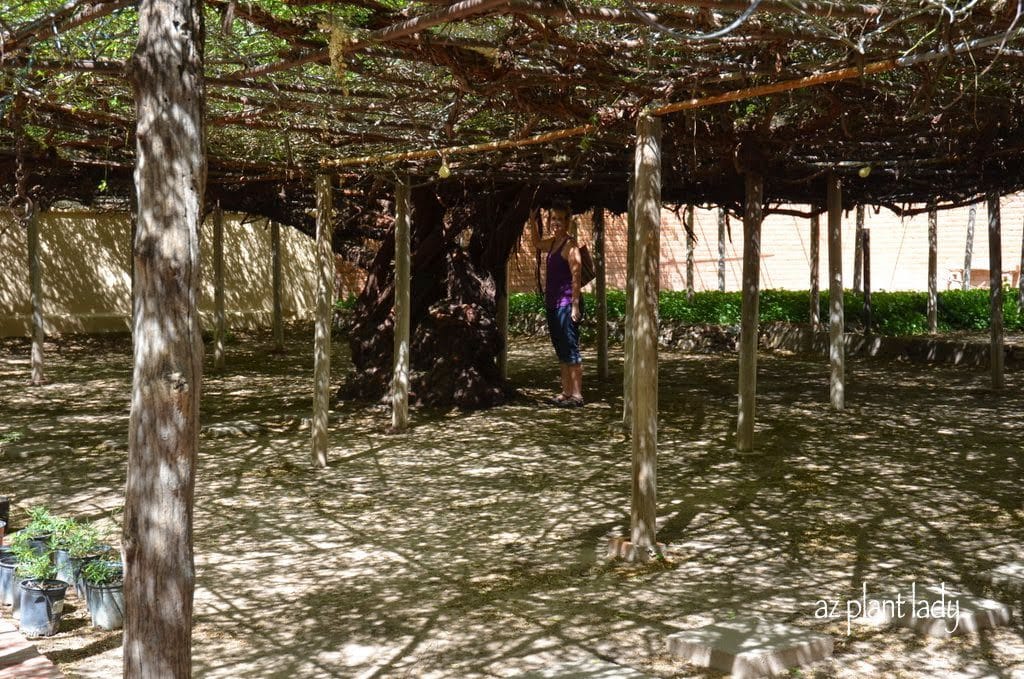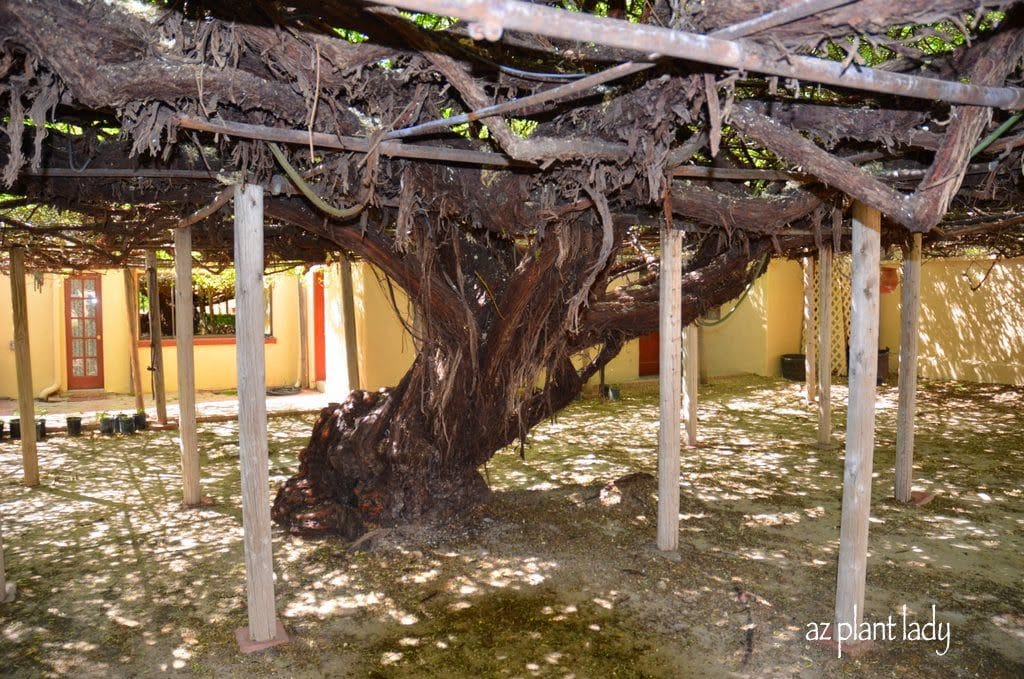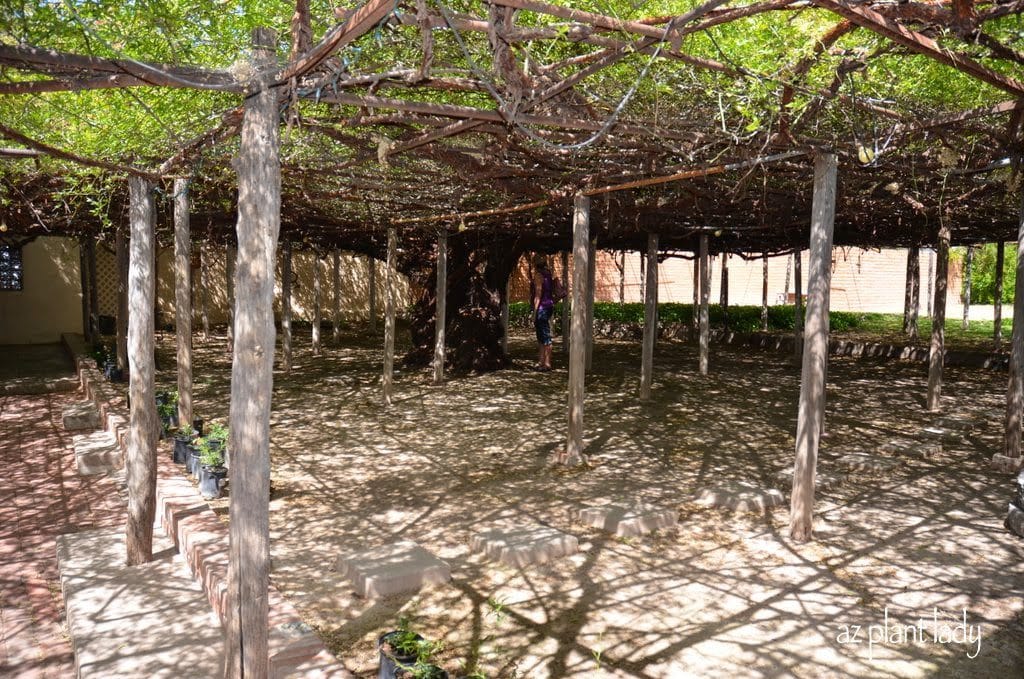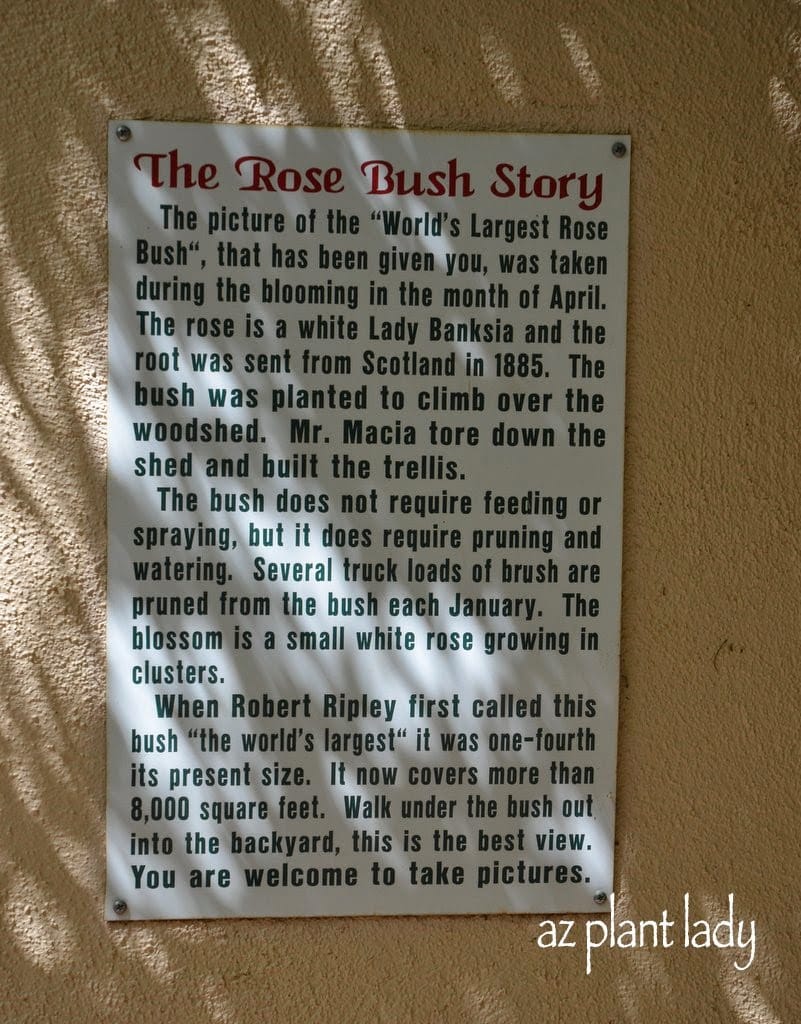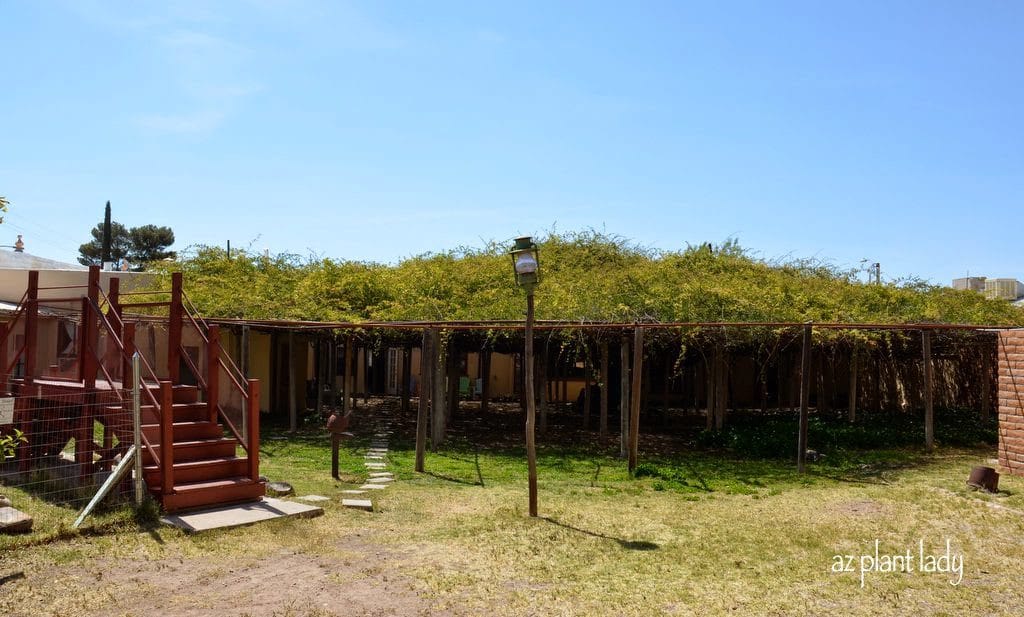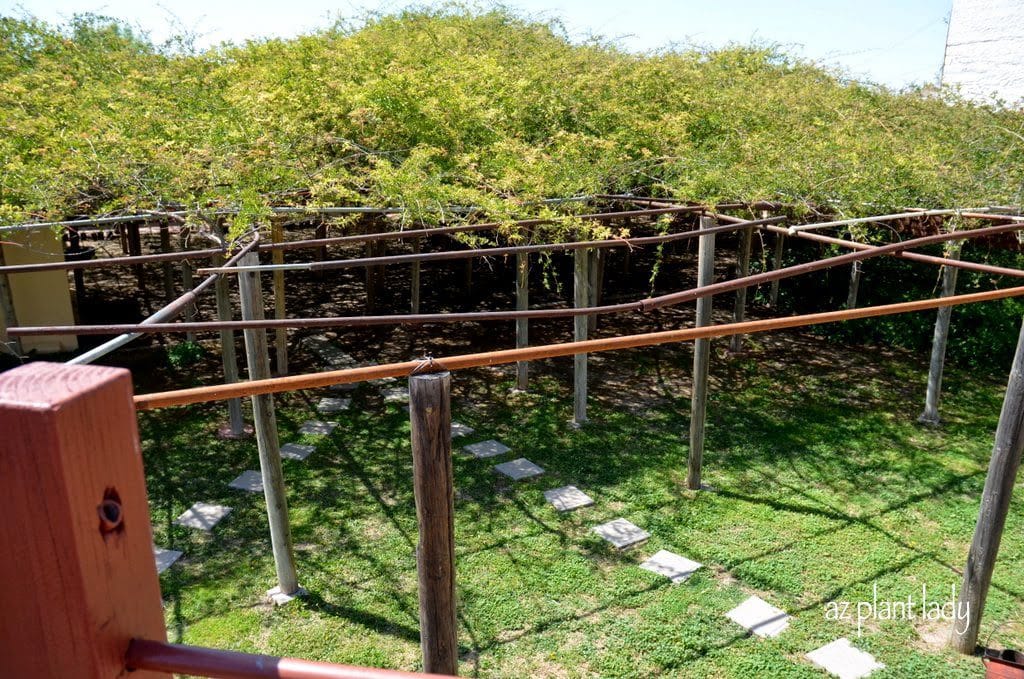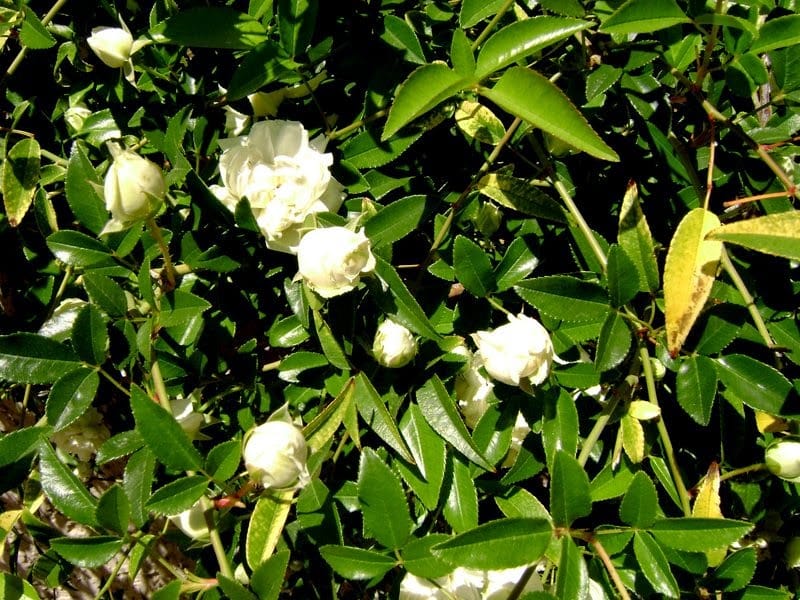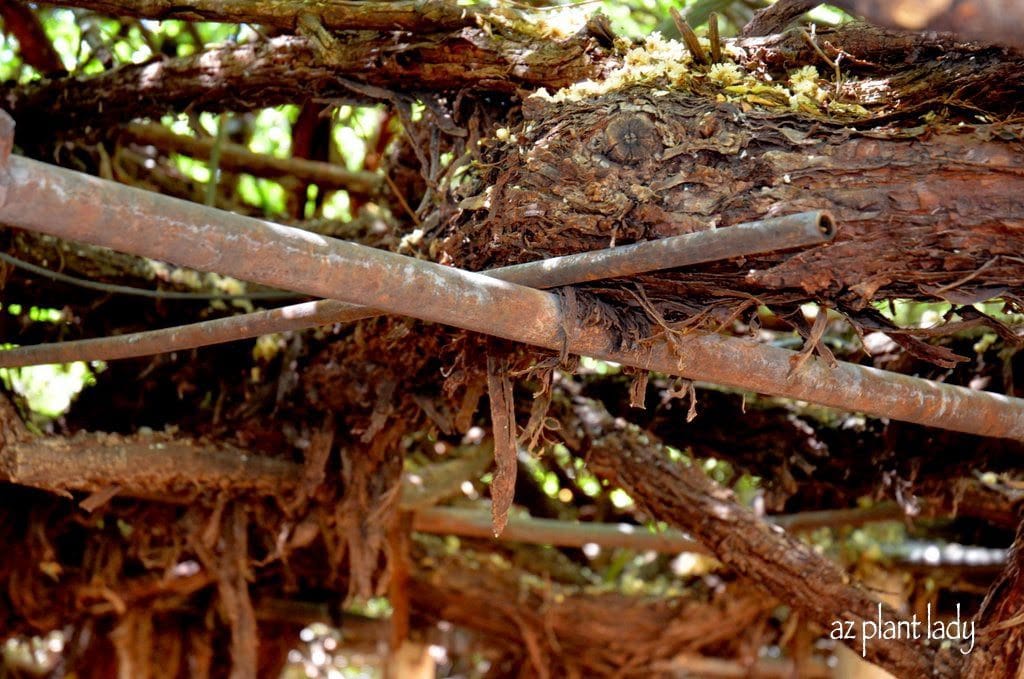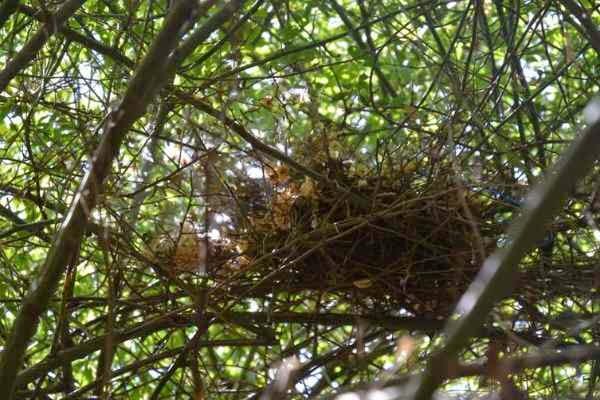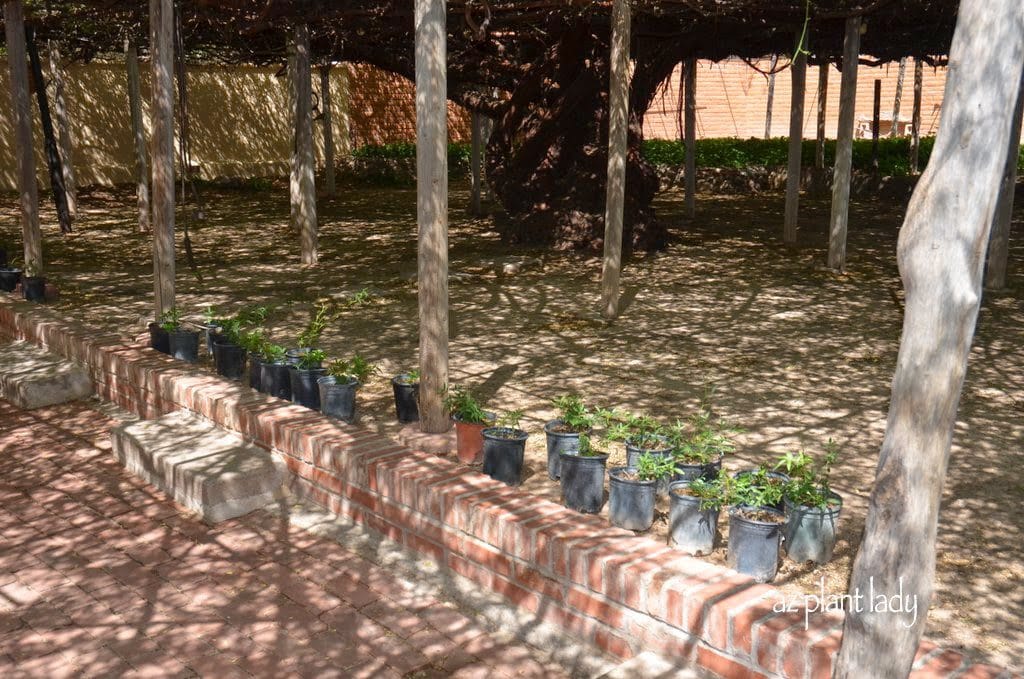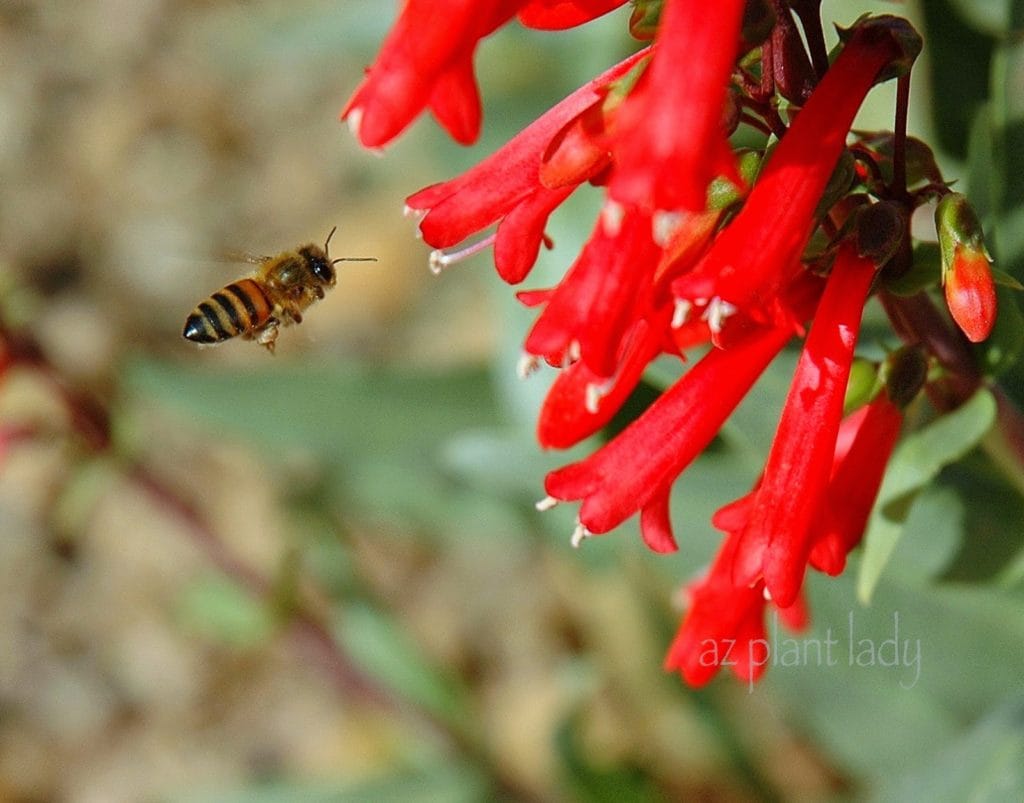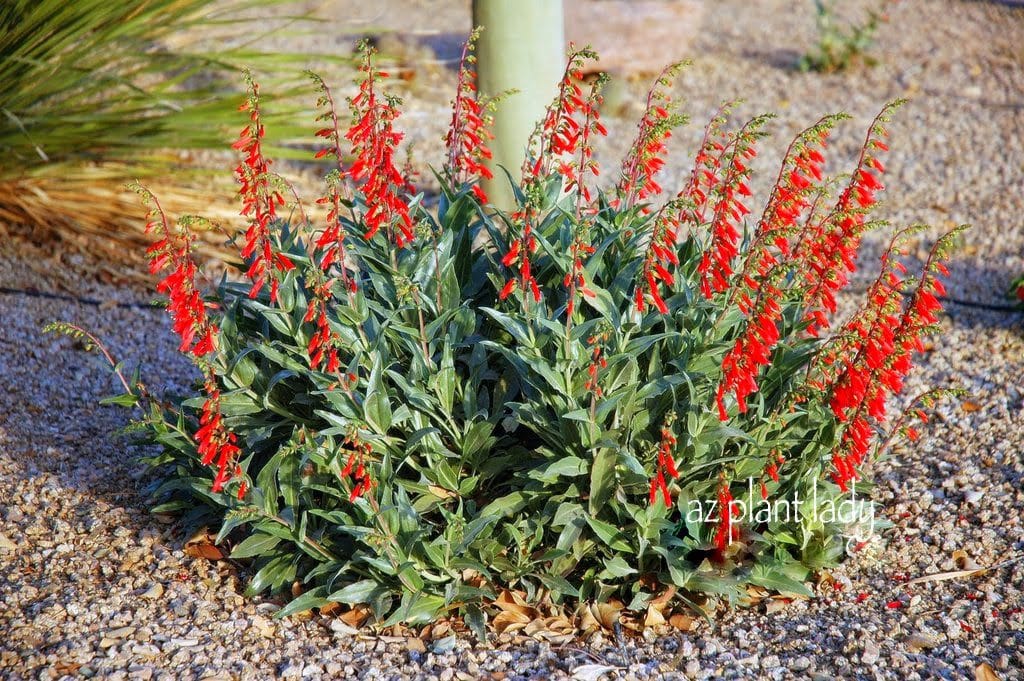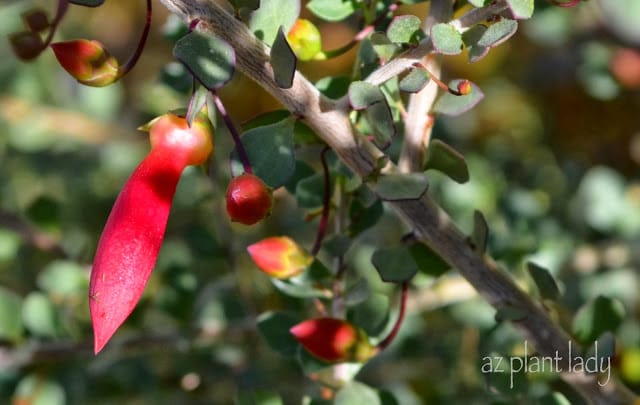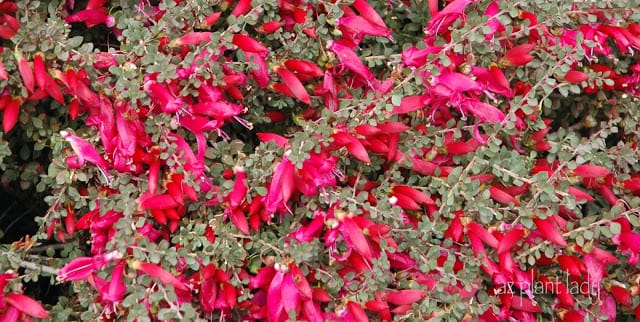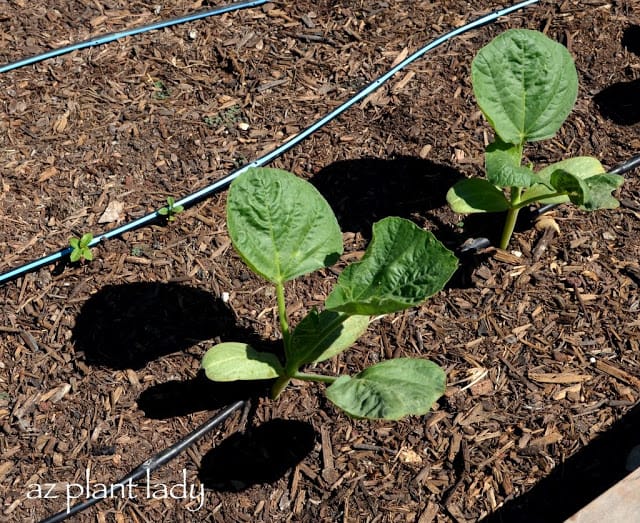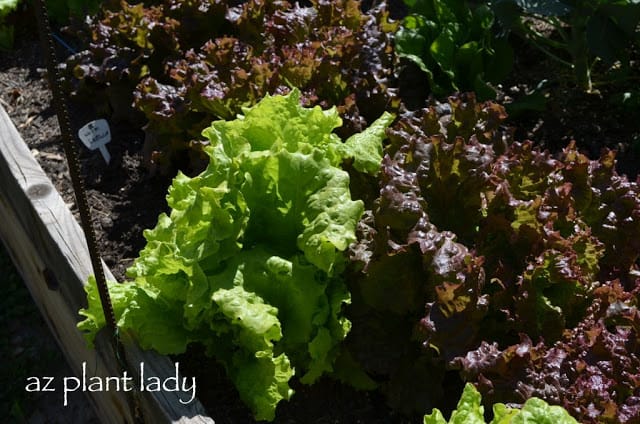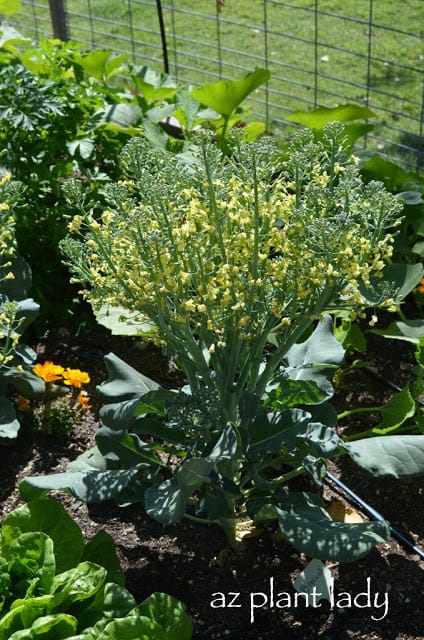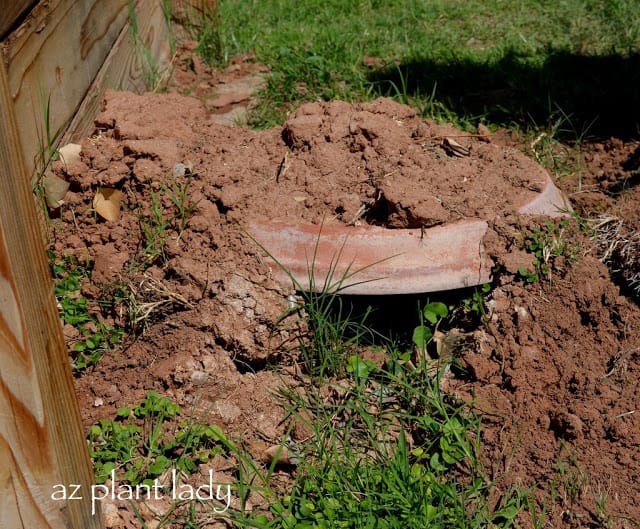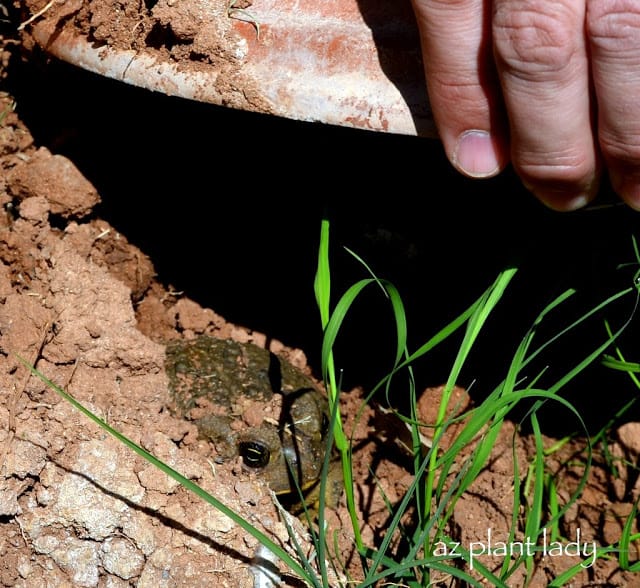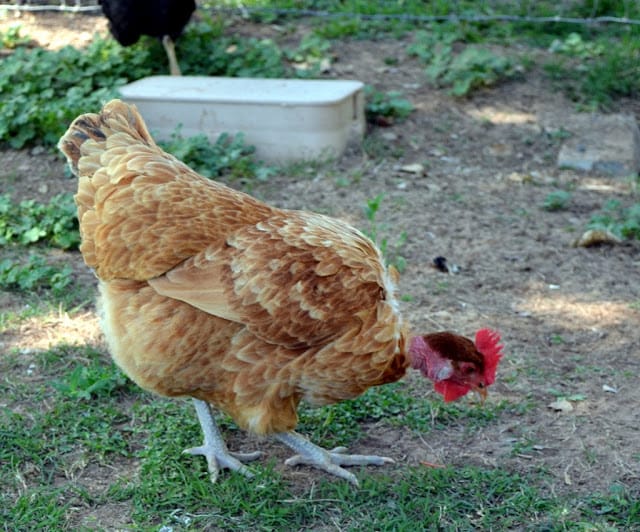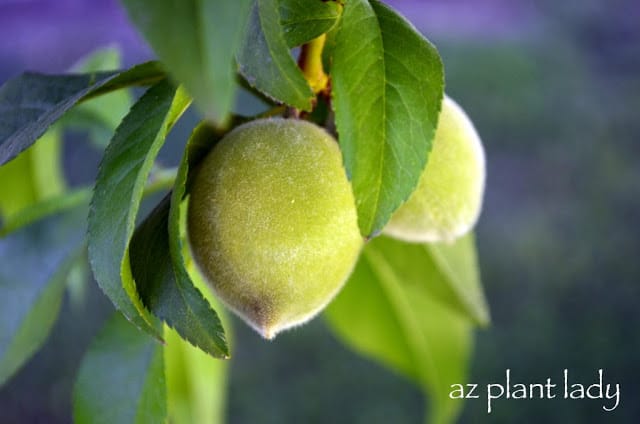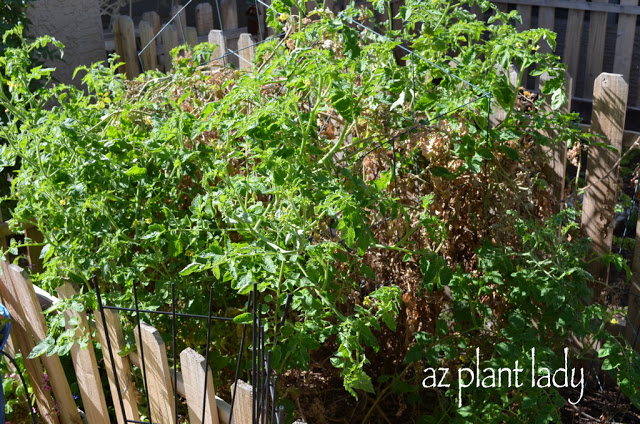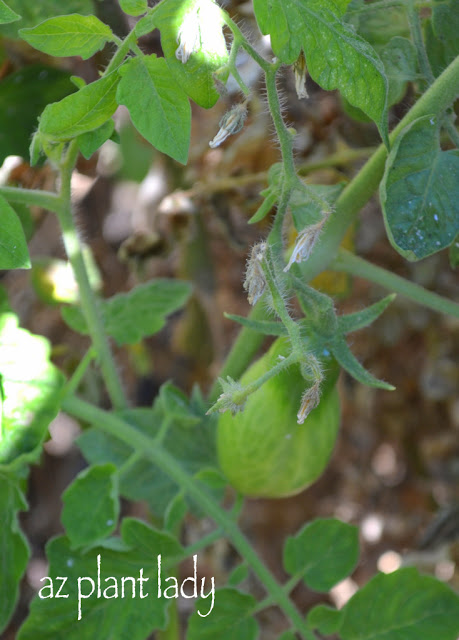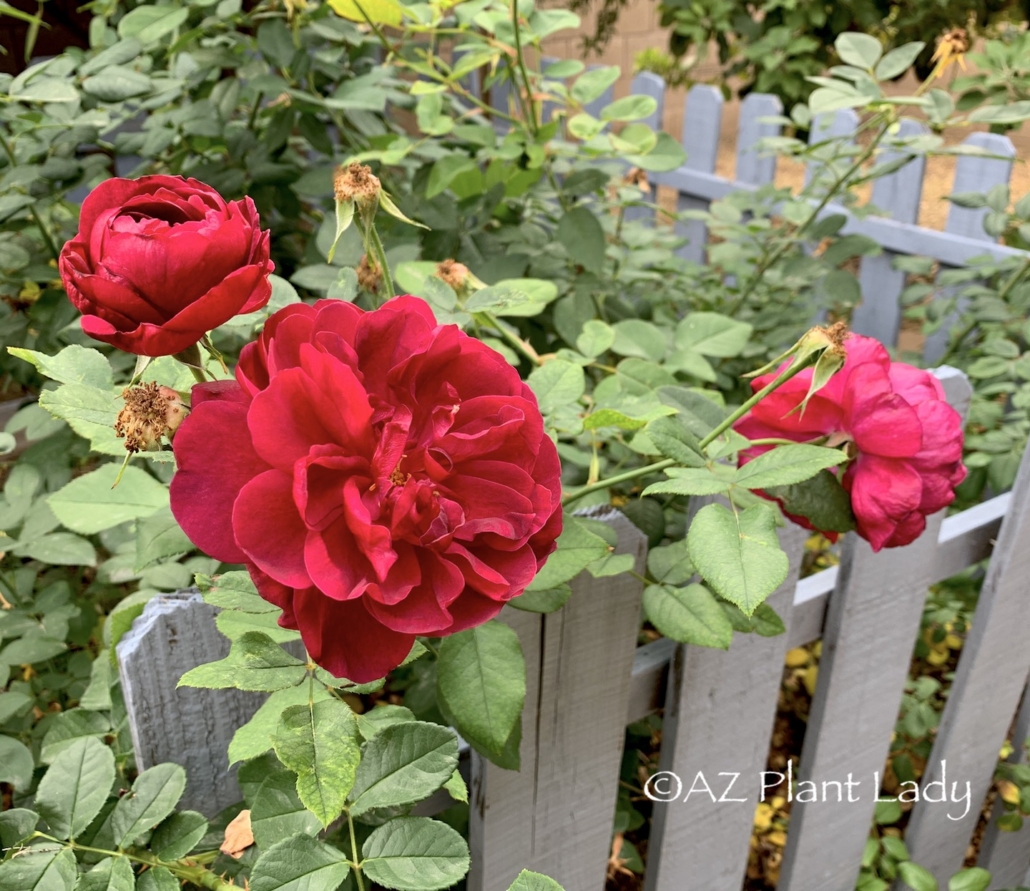
Planting Own-Root Roses in the Desert: A Blooming Success Story
Have you seen roses growing in a desert garden? What about own-root roses?
When I talk with desert dwellers, many are convinced that roses cannot grow in our hot, dry climate. However, that just isn’t true. I experience a certain kind of joy when I share with them that they can grow roses in the desert.
I’ve done it since the early 90s, and roses are what began my desert garden journey.
Year-Round Rose Planting
Typically, when people think of planting roses in the desert, they think of winter because that’s when we can plant bare-root roses. But did you know we can plant roses at other times of the year?
Own-root roses expand the planting season, which can be planted in spring and fall.
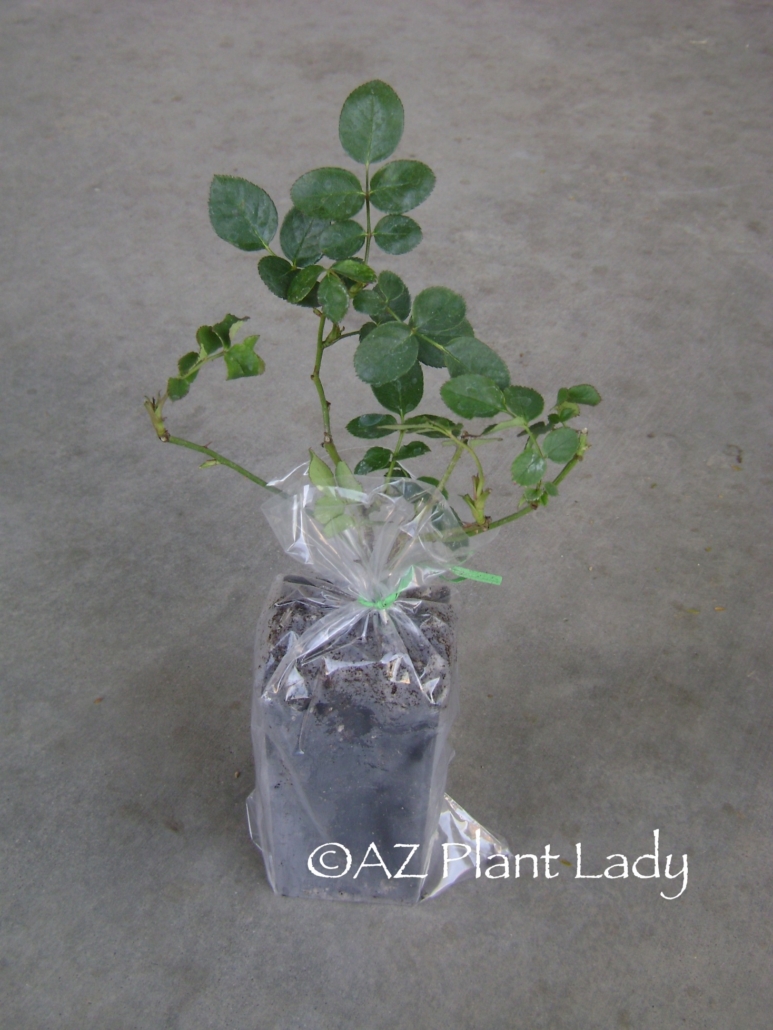
The Allure of Own-Root Roses
So, what are own-root roses? Most roses are grafted, which means that the rose consists of two different rose plants (the above-ground part of the rose, which is grated onto the rootstock of another rose). In comparison, own-root roses are grown from cuttings and grow on their own roots.
Usually, you can purchase roses in three forms – bare-root, nursery container, and own-root. I’ve bought and grown roses successfully in all those forms in my garden.
However, I do have a preference for own-root vs. grafted roses for the following reasons:
- They are hardier and live longer than grafted roses.
- There is no danger of suckers from the rootstock growing and choking out the rose plant.
- You aren’t restricted to winter-only planting.
- They have healthier root systems than nursery-grown container grafted roses.
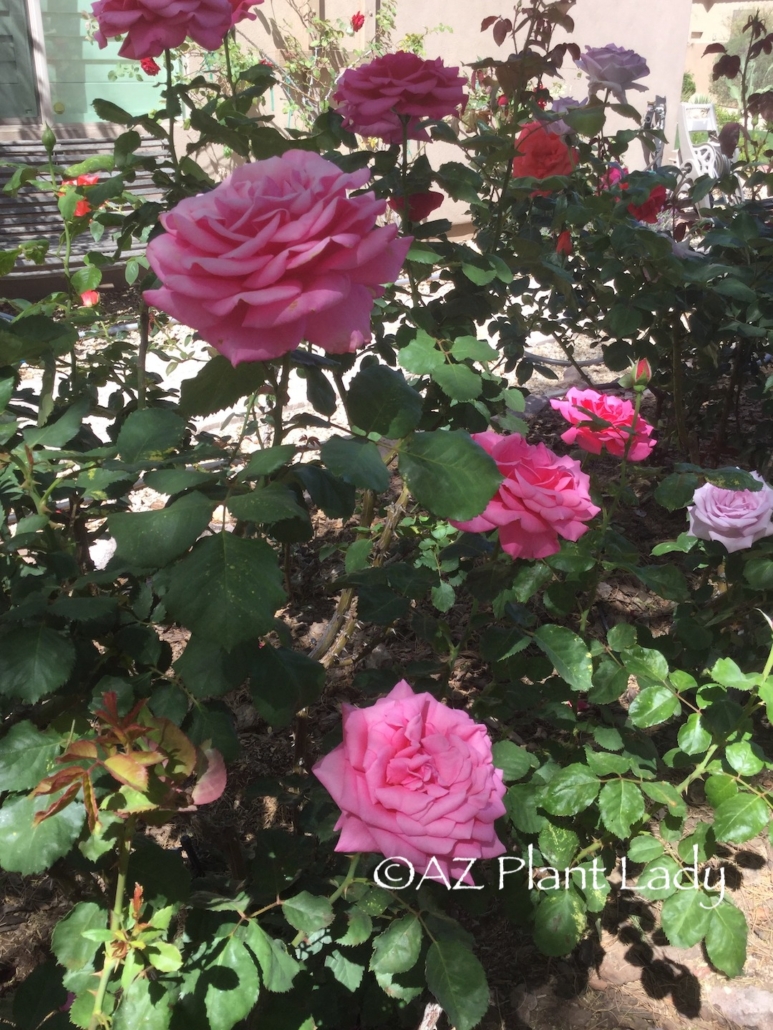
Tips for Planting Own-Root Roses
Spring and fall are great times to add own-root roses to your garden! It’s important to avoid planting roses in the summer because the intense heat makes if difficult for roses to become established.
So, if you are ready to enjoy the beauty of roses in your garden, here are some things to keep in mind:
Location for roses:
Plant in an area that receives approximately 5-6 hours of sunlight. Avoid west-facing exposures, which are stressful for roses. East-facing exposures are best or areas where there is afternoon shade. Roses can tolerate full sun all day as long as they aren’t close to places with reflected heat such as walls, sidewalks, or driveways.
Make sure there is room for the rose to grow – about 4 feet away from surrounding plants.
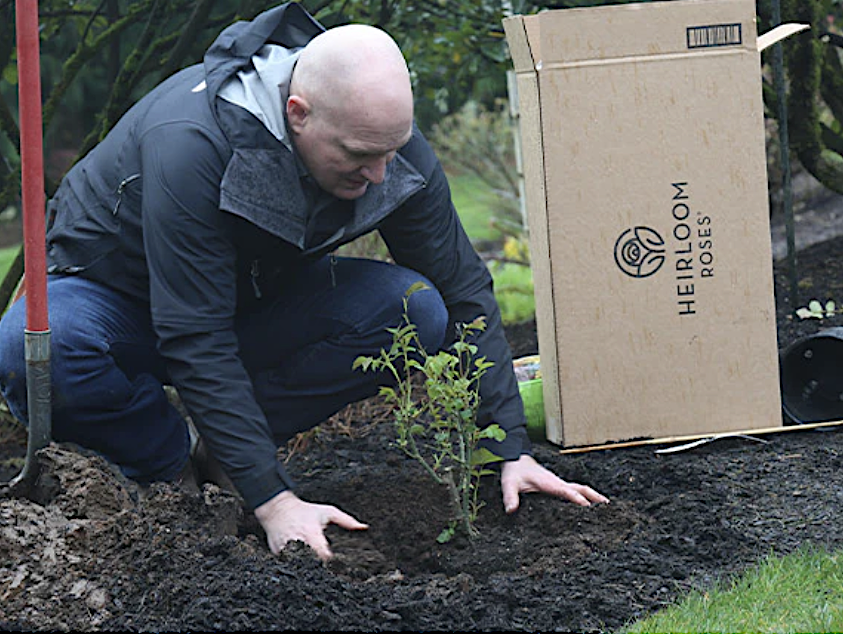
How to plant own root roses
- Water your rose in its container thoroughly- you want the entire root ball to be wetted.
- Dig a hole two 2 1/2 feet wide and about 2 feet deep. Amend the existing soil with 1 part compost mixed with 1 part existing soil. Then add a handful of bone meal and mix in. *You can add some worm castings (earthworm poop) to the planting hole if desired, which is beneficial to roses.
- Once your soil mixture is ready in the large hole, create a smaller hole to fit your new own-root rose. Carefully remove the container from the rose and place it in the hole. Fill in the hole and tamp down the soil with your hands.
- Water the rose deeply.
- Apply a 3-inch layer of mulch, such as bark chips, around the rose, extending 2 feet from the base of the rose. Avoid using landscape rock (gravel) up against the rose, which isn’t ideal.
- In spring, water daily if temperatures are over 90 degrees. Otherwise, water every 3 days. You’ll soon see new growth forming.
- Don’t fertilize your new rose right away – wait until they have produced their first flowers and then fertilize with an organic rose fertilizer in spring or early fall.
Where to Find Own-Root Roses
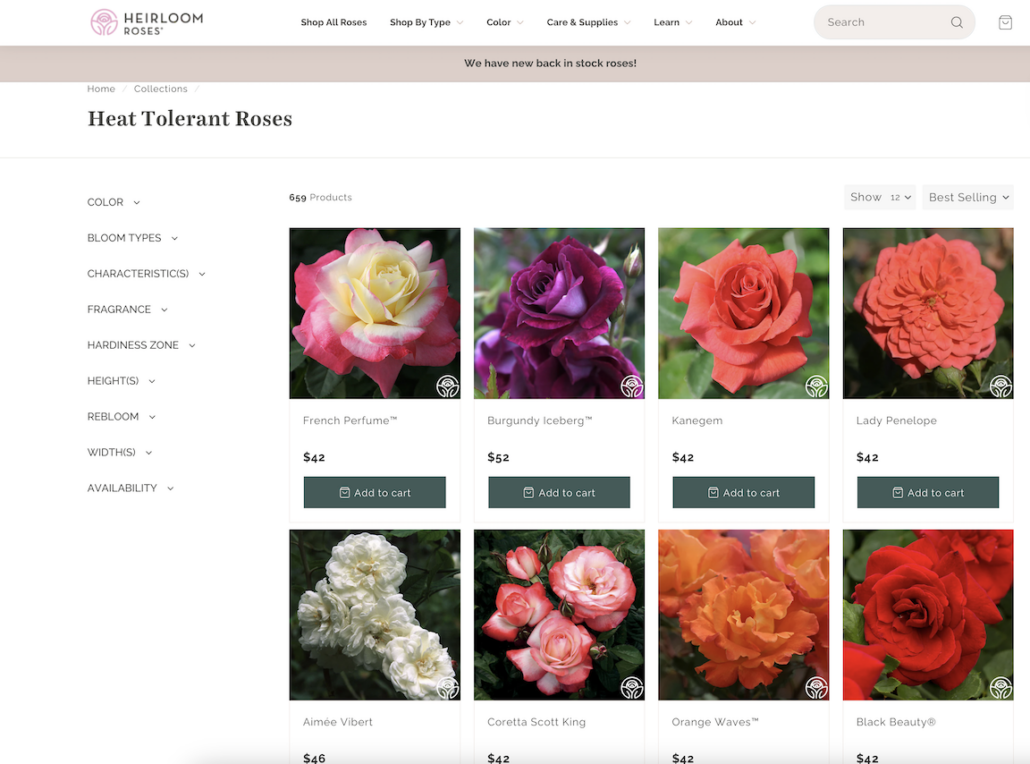
If you want to plant roses this spring (or fall), I recommend using own-root roses.
Most nurseries and mail-order rose growers don’t carry them. However, I’ve grown roses from Heirloom Roses which has a vast collection of own-root roses. In fact, that is the only type of rose they sell.
You will find many popular varieties of roses in all different forms – climbers, David Austin® roses, hybrid tea, floribundas, and more so that you can go about planting own-root roses in your garden.
They have a section of heat-tolerant roses for you to browse for the perfect one for your garden! Many of my favorites, such as Chicago Peace, Color Magic, Darcey Bussell, Mister Lincoln, and so many more, are listed.
Growing roses has brought me a lot of joy and I hope it does for you too!




